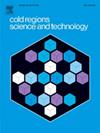Technological advancements for anti-icing and de-icing offshore wind turbine blades
IF 3.8
2区 工程技术
Q1 ENGINEERING, CIVIL
引用次数: 0
Abstract
Due to the abundance of wind resources in marine environments, offshore wind turbines (OWTs) have gained significant attention in recent years. However, their blades are prone to ice accretion when operating in cold climates. Ice accretion on OWT blades induces surface roughness thereby reducing the aerodynamic performance of the turbine. Although various ice mitigation techniques have been explored, tested, and applied to onshore wind turbines, their feasibility for offshore application remains uncertain. Therefore, this review conducts a comprehensive feasibility study, examining each ice mitigation technique, its fundamental principles, advantages, disadvantages, and the potential for successful integration on OWT blades. The study also highlights the challenges of implementing these techniques in harsh offshore environments, providing critical insights for future research in this field.
求助全文
约1分钟内获得全文
求助全文
来源期刊

Cold Regions Science and Technology
工程技术-地球科学综合
CiteScore
7.40
自引率
12.20%
发文量
209
审稿时长
4.9 months
期刊介绍:
Cold Regions Science and Technology is an international journal dealing with the science and technical problems of cold environments in both the polar regions and more temperate locations. It includes fundamental aspects of cryospheric sciences which have applications for cold regions problems as well as engineering topics which relate to the cryosphere.
Emphasis is given to applied science with broad coverage of the physical and mechanical aspects of ice (including glaciers and sea ice), snow and snow avalanches, ice-water systems, ice-bonded soils and permafrost.
Relevant aspects of Earth science, materials science, offshore and river ice engineering are also of primary interest. These include icing of ships and structures as well as trafficability in cold environments. Technological advances for cold regions in research, development, and engineering practice are relevant to the journal. Theoretical papers must include a detailed discussion of the potential application of the theory to address cold regions problems. The journal serves a wide range of specialists, providing a medium for interdisciplinary communication and a convenient source of reference.
 求助内容:
求助内容: 应助结果提醒方式:
应助结果提醒方式:


